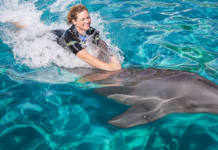Last Updated on November 25, 2022 by
We have talked on several occasions about practical lifeguard training exercises and on many more about the importance of mechanizing our reactions to rescue, an intervention in the arena.
The importance of having practiced the protocols and being able to respond almost automatically in every situation that comes our way.
Our coordinator at the beach explained to us in a previous post what they are used for in practical lifeguard training exercises, evaluating the level of team members, making sure they stay in the desired physical shape, configuring teams balancing the qualities of their members, some are better in the water, others in the sand, some in an organization and communications…
We are fortunate that our team is a group of professionals committed to their work, eager to constantly improve and learn.
As soon as we call a practical exercise, they start training on their own… a healthy competition is generated in which everyone wants to be the best. The physical preparation and review of the protocols in each situation can lead them to show the whole team that they are a good teammate.
It is also a way of maintaining communication between all the members of the team who usually do not coincide because each one of them is in his position.
Each one of them becomes aware of their strengths and also of those on which they must continue to practice and improve.
It is common that, above all, the last members to join the team decide to do internships outside of their working hours in those areas in which they can improve.
Practical Lifeguard Training Exercises On The Beaches
We leave you with an imagination of a practical exercise carried out on a beach. Practically all the members of the team participated, only those who had an injury or enjoyed their rest days were not present.
We are moved by everyone’s effort, the desire to excel and most importantly: the motivation that these practices represent for everyone. It is a pride that none of the team members has given up.
Each and every one of them is over. With better or worse times, with more or less success in the protocols. That assures us that in an emergency, no one gives up.
Improving is a matter of practice, training, and mechanization of protocols. Not giving up, insisting until you succeed, having an instinct to excel, it’s a matter of motivation, wanting to improve, of team spirit… in short… what we want from each and every one of our lifeguards.
Our coordinator at the beach told me at the end of this exercise that both the best and those who have obtained the worst positions were euphoric, motivated, and eager to improve.
The entire team supports each other with the assurance that all members, in case of an emergency, will respond. How important to know that we can trust the partner with whom we share service…
Our congratulations to all, this is the lifeguard profile that we need, committed, motivated, colleagues, eager to improve… proud of you!!!
Also Find Out: ALA lifeguard training near me
I don’t work as a lifeguard… I AM a lifeguard!
Read More: Can You Earn from A Junk Car?
Story Of An After-Hours Rescue
Cristian was riding his bike along the bike lane. He had finished work a while earlier.
His attention is caught by a crowd of people looking at the sea and he decides to get closer. Upon reaching the height of the group, he sees a swimmer apparently in trouble about 200 meters away.
Christian, the lifeguard, approaches the breaking waves to assess the situation, there he discovers 3 other swimmers in the water determined to approach the swimmer and proceed to the rescue. Cristian joins them, when they arrive around the victim, they find him somewhat aggressive, he does not allow them to approach him, even trying to attack them.
Cristian manages, after several attempts at aggression, to hold him and tow him to shore. The three users who had rushed to the rescue encouraged him throughout the journey to the shore, where he proceeds to assess the condition of the rescued swimmer. He is conscious but very nervous and hypothermic.
In a few minutes, the Port Police and an ambulance arrived and, after the medical assessment, decided to transfer him to the hospital.
Our recognition to our lifeguard, for his work, but above all for his vocation. Out of service, after hours, without support material, with an aggressive user…
Cristian does not work as a lifeguard, Cristian is a LIFEGUARD
Big applause Cristian, delighted to have you in our team trained at American Lifeguard Association.


























